How to Teach Your 3 Year Old at Home – Get Ahead in Preschool
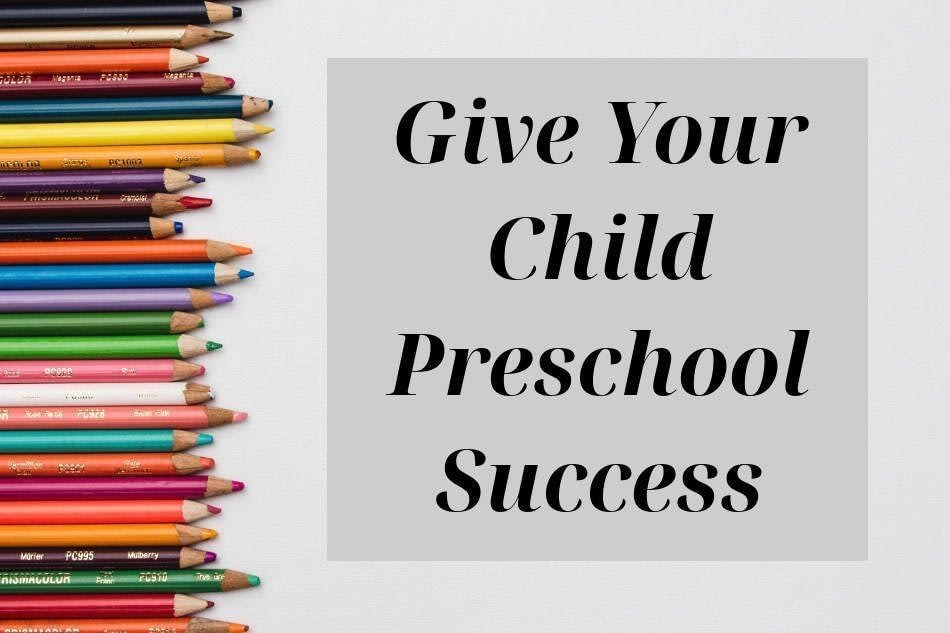
“Experts tell us that 90% of all brain development occurs by the age of five. If we don’t begin thinking about education in the early years, our children are at risk of falling behind by the time they start Kindergarten.â€
Robert. L. Ehrlich
Why leave it all up to our preschool teachers to make sure our kids get the best start in life?
You helped them with their first words, their first foods, and their first steps. Why should you stop now when they get to preschool? You and your 3 year old should have a lifelong journey of learning together.
That all starts now, with a solid foundation of knowledge.
Let’s help out our amazing, hardworking preschool teachers and spend time learning at home. Let’s make sure your 3 year old isn’t just ready for kindergarten, but the one with their hand up in class ready to answer every question.
But what do I know about teaching? You might ask yourself. Well, you know a lot more than you think.
With a little guidance and knowing what learning objectives your 3 year old needs to work towards, you could boost your child’s learning development in no time.
So, you can get your kid loving their learning experience and be leaps and bounds ahead of their friends. Because they will have already started learning with you. I don’t think I need to say just how important a boost in their learning now would do for their future success.
Don’t look so worried, learning at preschool age isn’t all about maths and reading. Social skills are important too. You will be pleased to find out that you can reach most of their goals with play-based learning.
Now, we can get your 3 year old ahead of where they need to be and give them the attention and skills they need to succeed as they grow. All this while playing and having fun! Let’s teach you how…
“When we embed skill practice in the game structure, we create the best conditions for children to practice academic skills as well as provide support for their psychomotor and social learning.†–
Sydney L. Schwartz. (Teaching Young Children Mathematics)
BUT WHAT SHOULD I TEACH MY 3 YEAR OLD?
Every year teachers get given a handbook that lists all the things they should teach their preschool students. These are called learning objectives. Learning objectives are pretty similar to each other across education boards in different states.The main goal is to give your 3 year old a well-rounded education and prepare them for kindergarten.
You can read a handbook for yourself here. (111 pages in total if you have a few spare hours!) or just read my ultimate guide to all the learning objectives your child needs to tackle, and more importantly, all the fun ways to achieve them through play at home.
OVERVIEW OF THE LEARNING OBJECTIVES FOR A PRESCHOOLER
1. Social / Emotional Development
1.1 Self-Confidence
1.2 Self-Direction
1.3 Identify and express feelings
1.4 Positive interactions with other children and adults
1.5 Pro-social behaviors
2.1 Creative movement / Dance
2.2 Music
2.3 Dramatic Play / Storytelling
2.4 Art
3. Health, Safety & Physical Education
3.1 Self-help & Personal hygiene
3.2 Nutritious food choices
3.3 Awareness of hazards
3.4 Gross / fine motor skills
4.1 Initiative, Engagement & Persistence
4.2 Creativity & Imagination
4.3 Identify & solve problems
4.4 Apply themselves to new situations
5.1 Start to understand numbers and counting
5.2 Start to understand plus and minus
5.3 Measuring
5.4 Shapes
6.1 Inquiry Skills
6.2 Matter and energy
6.3 The Earth
6.4 Living things
6.5 Technology
7. Social Study, Family and Life skills
7.1 Identify characteristics about themselves, family and others
7.2 Sense of community
7.3 Neighbourhood community
7.4 Different cultures
8.1 Appreciate people use different languages
9.1 Use technological devices independently
I know that after reading that list you might be thinking that sounds like a lot to tackle. Don’t worry. I will break everything down for you with full explanations of how to make achieving those important milestones fun and easy. We will try and focus on helping your 3 year old learn through play.
A COMPLETE PRESCHOOL LEARNING GUIDE FOR YOUR 3 YEAR OLD
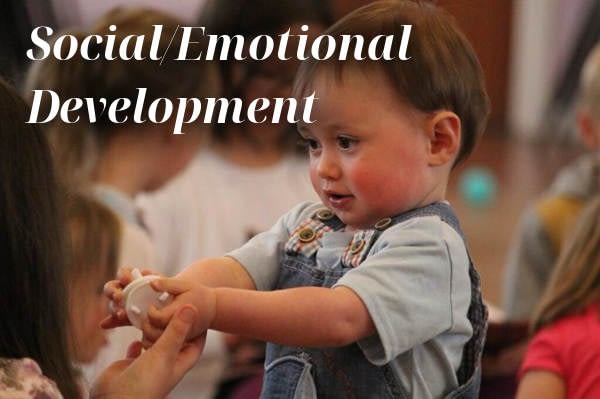
1. SOCIAL / EMOTIONAL DEVELOPMENT
1.1 SELF-CONFIDENCE
It’s time to build up your 3 year old’s self-esteem!
- GIVE THEM ENCOURAGEMENT: Make sure to praise them, if they deserve it. You want to give them compliments that they deserve. Make praise a reward for when they do something good. This positive attention when they are doing well will boost their self-esteem and make them more likely to carry on their positive behavior.
- DON’T RESCUE THEM: If they are struggling with a task that they are close to completing. Try not to rush in and help. Encourage them from the sidelines not to give up. When they eventually succeed without help, it will boost their confidence.
- INVOLVE THEM IN DECISIONMAKING: When a decision is made that affects them or your family. Try to involve them as much as you can. This turns them from just a passenger, into a child helping to shape their own future. Confidence comes from knowing their opinion matters.
- BE POSITIVE: Be positive about their actions. Try not to be negative. Even if they have done something wrong. Try to find constructive criticism. The fastest way to knock anyone’s confidence is constant negativity.
- ENCOURAGE THEM TO HELP OTHERS Helping someone else gives you such a positive feeling. Help them to help others. They can help you in the home, help other children, help their neighbor. Start with just small things like passing a plate or picking up their toys after playtime.
1.2 SELF-DIRECTION
Self-direction is when your 3 year old is able to do things on their own without constant help. It is independence. It means they can play on their own, tidy up without being told, or play with their friends.
- INDEPENDENT PLAY: You don’t always have to feel like you constantly need to be entertaining them. Let them get bored. Let them spend time on their own. They will surprise you with what games and fun activities they dream up.
- LIMIT SCREEN TIME: Technology, although important, can dampen a child’s natural imaginative nature. The games the might play and the videos they may watch don’t do anything to fire their own creativity. They don’t challenge their mind as much as the independent play will. There is time for technology, just make sure it doesn’t take up the time of other important skills.
- ENCOURAGE THEIR INTERESTS: Every 3 year old has their own specific interests. Planes, trains, trucks, horses. Encourage theirs. Let them explore their love of anything and everything. They will let you know what they are interested in, just listen to them.
- TRUST THEM: Try not to interfere in their games and play. It might seem simple and silly. But children experience and understand the world around them through play if they are allowed to.
1.3 IDENTIFY AND EXPRESS FEELINGS
Your 3 year old’s emotions and feelings might be all over the place. Happy one second and crying the next. It’s pretty common. What you need to do is help them identify their own feelings and express them appropriately and have an idea what others are feeling.
- GUESS MY FEELINGS GAME: To help your 3 year old understand their own and other people’s feelings, you can play a game with them. If you mime a feeling, for example, a sad face, and they have to guess how your feeling. Then let them have a go. Now they will think of a feeling, express it and now you have to guess how they are feeling. Try playing the game in front of a mirror so your 3 year old can see their own facial expressions. Here are a few ideas to get you started.
- Angry
- Sad
- Happy
- Sleepy
- Shy
- GIVE THEIR FEELINGS A NAME: Sometimesa 3 year old may not understand what feeling they are experiencing. You should name their feelings for them so they can recognize the same feeling in the future, If they are excited about going to play, you can tell them “Wow, you are excited to go to the park!â€. If they are upset that their friend has gone home you can tell them. “I know your sad that your friend has had to leave but they can come and play tomorrowâ€.
- DESCRIBE OTHERS FEELINGS: When you see a person showing a certain feeling. Explain that to your 3 year old. For example, when another child at the park has to go home they might get upset and cry. Explain to your 3 year old that the child is sad because they don’t want to leave.
1.4 POSITIVE INTERACTIONS WITH OTHER CHILDREN AND ADULTS
This concerns the way your 3 year old interacts with their friends and the adults in their lives.
- ROLEPLAYING GAMES: Kids love to roleplay. Include examples of positive interactions into fun roleplay games. An example would be holding the door open for someone and saying “thank youâ€. Or playing at ordering in a restaurant, “Please can I have a drink of water and the soupâ€.
- TALKING TO OTHERS: Encourage your 3 year old to interact with adults and other children in their daily lives. I know most people have very busy days. But why not stop for a little while and chat with someone. Encourage your 3 year old to join the conversation. Take the time to let them talk, try not to dismiss it as shyness if they are quiet at first. Just give them a little more time or help them by prompting them with questions.
- USE STORYTELLING: Stories are powerful learning experiences for children. Try to find stories that involve a message of helping others and good relationships.
1.5 PRO-SOCIAL BEHAVIORS
This simply means being nice to the people around them. It includes doing positive things for others that foster good relationships and environments. It includes taking turns, sharing and making friends.
- SET UP PLAY DATES: In order for your child to improve their social behavior. You need to give them experience around other children. If you have friends or family with children the same or similar age. Make a playdate so they can play and learn together. If you are struggling to find your child a playmate of a similar age then look for local playgroups you could join.
- ENCOURAGE GROUP PLAY: Rather than giving children individual toys. Encourage games and toys that make children work and play together. For example, the game hide and seek or duck duck goose. They could play doctors, restaurant or grocery store. These games encourage kids to use pretend play and work together.
- SHARE AND TAKE TURNS: Encourage your child to share and take turns. If they are playing with a toy, ask them to share it with another child who might be interested. Reassure them that they will have another turn. A fun game to encourage sharing and turn-taking is “pass the parcelâ€.

2. VISUAL / PERFORMING ARTS
2.1 CREATIVE MOVEMENT / DANCE
Dancing and moving freely come naturally to your 3 year old. These are just some ideas to make sure that they are making the most of their natural talents.
- MUSICAL FREEZE: Play dance music and get your little one dancing. But when you stop the music at random. They have to freeze on the spot and stay in position. If they move after the music has stopped then they are out. 3 year olds love this game and it keeps them active and healthy.
- DISCO: A good disco is always fun! You can play dance music. Add flashing lights if you have any to add to the atmosphere too. Dancing is fun and keeps them active and healthy. Try leading the dance moves and calling out their names so your 3 year old learns them. Here are a few to get you started; the twist, the robot, twirl, the gallop.
- DANCE SHOWS: Encourage your child to put on a dance show for their friends or for you. Make sure they also have a chance to be in the audience for a dance show by a friend (or even yourself!). This will teach them to listen, watch, clap and tell their friends how great they were!
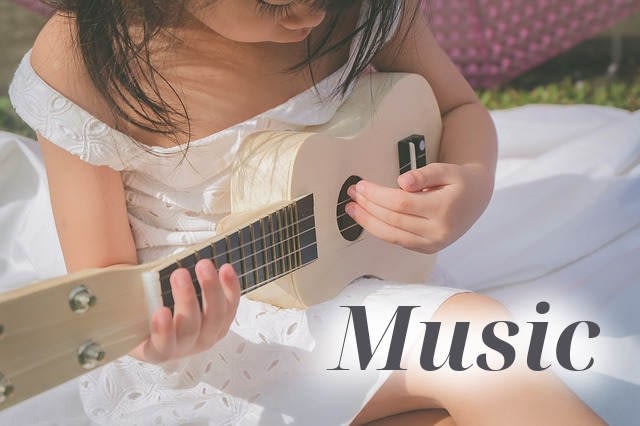
2.2 MUSIC
Everyone can appreciate listening and making music. Even at 3 years old I bet your child has favorite songs and loves to bang on a drum. Or even just a pan!. You should encourage that behavior. Allow them to be creative and experiment with new ideas. Here are some ways you can do that.
- HOMEMADE INSTRUMENTS: Help your child make and play a homemade instrument. It will be fun to make and also fun to play. I have found some great ideas (with instructions) for simple instruments that you can make at home:
- CULTURAL MUSIC: Encourage your 3 year old to listen to music from lots of different genres or cultures. For example, let them listen to fun Mexican music, reggae, rock, classical, french music, Spanish music. The options are endless. I find Spotify and other streaming services are like YouTube are great for finding any genre you want.
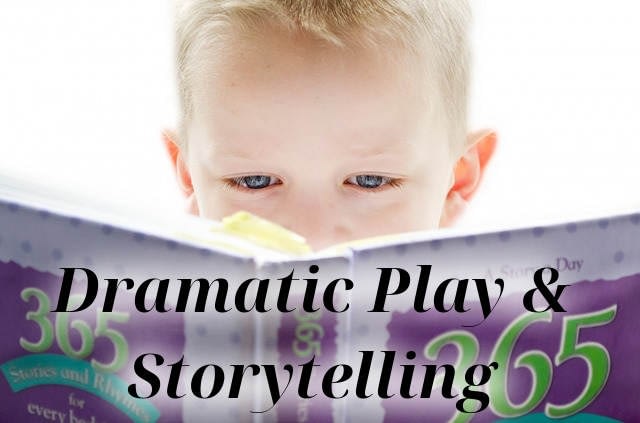
2.3 DRAMATIC PLAY / STORYTELLING
Most 3 year olds are naturally dramatic and love stories. All you need to do is encourage them to explore this side of their personality. It is important to help them understand when it is good to be quiet, watch and listen. They also need to be able to give positive feedback for their friends performances.
- MAKE A DRESS-UP BOX: Every 3 year old should have access to a dress-up box. You should fill it with lots of fun clothes and accessories. They can be old clothes, hats, scarves etc from your own wardrobe or you could visit a goodwill shop to see what weird and wonderful items they have. Another good option is costume party items and props from eBay and Amazon.
- ACT OUT A FAVORITE STORY:Â Together with your kid, using as many props as you can find and a lot of imagination to fill in the gaps. Act out their favorite fairy tales or stories. Little red riding hood, Cinderella. You will have so much fun and your 3 year old will be learning at the same time.
- PERFORM A PLAY: When your children’s friends are around for a playdate. Suggest that they make up their own play, story or even just a scene to act out to their friends. Have some children be in the audience. It is their task to watch the play quietly and clap at the end. Then switch the children’s roles. This helps them learn skills such as focus and managing their emotions. Listening and watching are just as important as acting.

2.4 ART
I don’t think there is a 3 year old on this planet who doesn’t enjoy art. I want to make some suggestions for more unusual art projects. This should expand their imaginations and capabilities beyond the drawing and painting which I am sure they will already be used to.
- CLAY SCULPTING: Most children have used play-dough. You should buy some modelling clay and encourage your child to create items with it. They could create an animal, a small plate, a bowl, a wall decoration, etc. Some clay (Amazon link) that you can buy can be fired in the oven so they can keep their creation. The set we have from Amazon also came with all the modeling tools, which is great for developing fine motor skills.
- CRAYON RUBBING: Take a sheet of paper and a crayon. Then find anything that has a raised pattern. Then place the sheet over the item which has the pattern. Then get your 3 year old to rub the crayon gently over the paper. The crayon will reveal the pattern underneath.
- POTATO PRINTS: Cut different sized potatoes in half or into shapes. Have some washable paints in small pots and make sure your 3 year old is in clothes that you don’t mind getting messy. Then put some of the paint into open dishes. Encourage your child to dip the cut potato into the paint and use it as a stamp on the paper. You could think of other shapes that they could use as stamps. For example:
- Sponges
- Cloth
- Fingers
- Leaves
- SHOW THEM GROWN-UP ART: Make a visit to your local gallery. Find a mural in your local area. Plan to show them a sculpture that you like. Ask them to describe why they like it. How it makes them feel. Get them to draw it themselves while they are there or paint a copy when you get back home Let them experience different kinds of art and let it fire their imagination.
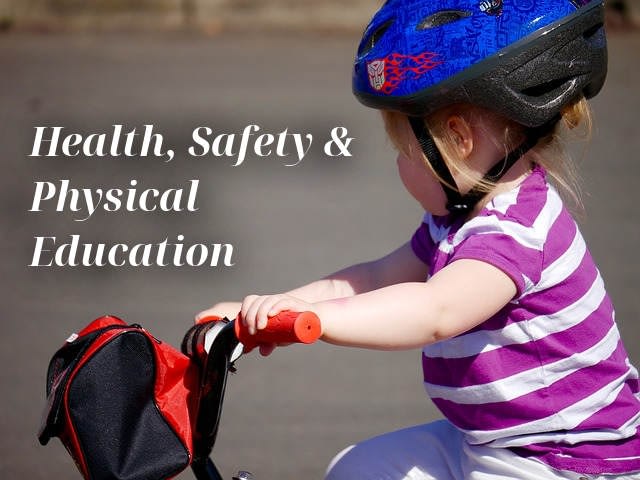
3. HEALTH, SAFETY, & PHYSICAL EDUCATION
3.1 SELF HELP & PERSONAL HYGIENE
Personal hygiene is important but sometimes it is a difficult thing to explain to a 3 year old. You should make sure they have the basics down. You should concentrate on letting them know about germs, sharing and the importance of washing their hands.
- GERMS: They are a difficult subject to teach a 3 year old about. You can’t see, smell or touch them. But important for them to know about. Explaining why germs are dangerous to them and other children is vital. It is one of the best ways to keep them healthy. Here is a fun game that you can play to help them understand:
- GLITTER GERMS GAME: With your child at the sink, pour a little glitter into their hands and have your child rub them together. Once the glitter covers their hands, tell them that the glitter represents little germs. Tell them to now wash the germs off with just water. They will find it very difficult to get all the glitter off with just water. Then when they realize they can’t get it all off. Tell them to wash their hands again but this time use soap. The soap will allow them to get all the glitter off and teach them an important lesson. Always wash your hands with soap.
- WASHING YOUR HANDS TO A SONG: Now your 3 year old knows why we wash our hands. You need to help them remember when to wash them. We wash them when they are messy, when they have been outdoors, before and after food, after touching animals and after blowing their nose. You can make handwashing more fun by singing the following song:
WASH YOUR HANDS SONG (To the tune of row your boat)
Wash, wash, wash your hands
Time to make them clean
Scrubbing all those germs away
Look at how they gleam
- RESTAURANT GAME: To help your 3 year old with their self-help skills in a fun way. You can have them play restaurant with you. Let them be the server. They can take your order and give you the right cup, plate, bowl,and cutlery. For example, if you are eating lovely pretend soup, help them understand that you will need a bowl and a spoon to pretend to eat it!.
3.2 NUTRITIOUS FOOD CHOICES
Healthy and nutritious food choices are important for your 3 year old to learn about. Help them learn to recognize foods that should be a treat and food that they should eat every day. If they learn healthy eating at an early age, they will be likely to carry it on into adulthood.
- FOOD SAFARI GAME: Buy unusual fruits and vegetables for your 3 year old to try. You could let them choose a fruit or vegetable treat to try when they get home. Trying new tastes and textures can be fun. Sit down with them and try it together. Ask them to describe how it looks, feels and tastes.
- VEGETABLE MYSTERY BAG: Take a selection of fruits and vegetables and put them into a bag. Have your kid pull them out one by one and they have to guess what they are called and what they taste like.
- MAKE A VEGETABLE PERSON: Using fruits, vegetables, and toothpicks. Help your child make the shape of a person. Once they have made their veggie person, encourage them to cook and have it for tea. For example, use a potato as a body, carrots as arms, a tomato head, celery legs, and cucumber feet.
3.3 AWARENESS OF HAZARDS
This section is all about teaching your 3 year old the first steps of keeping themselves safe by being able to identify hazards. By the age of 3, your child needs to start to be aware of the dangers of crossing the street, fires, cleaning products, strangers and seat belts, to name a few. We can teach them about these scary things with fun and safe games.
- CROSSING THE STREET: Make a pretend street in your home. Then teach your 3 year old about stopping, looking both ways and using crossings. You can use toys as props. You can even take turns in pretending to be a car to avoid. Once your 3 year old knows the basics of safely crossing a street. Get them to teach it to one of their teddy bears. By teaching their new skill, it will make them remember it even more.
- PLAY FIREPERSON: All children love the fire brigade. Get them to be a new recruit and fight fires around the home. Take them around the house and do a checklist for all the fire safety items you have. Get them to practice evacuating the house in case of a fire. It doesn’t sound fun, but 3 year olds will love it!
- DON’T TOUCH!: You can have your kid use their art skills and make a poster for everyone in the house about things not to touch. By making the poster they will feel helpful and learn about common dangers around the house. Include items like cleaning fluids, the oven, the bin, candles etc.
- SAFETY ROLE PLAY: For other dangers and safety issues, like strangers and using their seatbelt. You can have them act it out in role play. You could teach them what to say to strangers and how to recognize one. Then put on funny clothes and outfits and test their new skills. Don’t try to scare them. It’s just a matter of safety.
3.4 GROSS / FINE MOTOR SKILLS
This section is about helping to develop your 3 year old’s small and large movements. So examples of fine motor skills are things like: picking a flower, using a zip, using a button. Examples of gross motor skills are: rolling, crawling, jumping, running, skipping. Here are some ideas to help them develop these kinds of skills.
- GROSS-MOTOR SKILLS
- Headstands
- Roly polys
- Jump Rope
- Hopping like a frog
- Galloping like a horse
- Wheelbarrow races (You hold their legs and they use their hands to move)
- Play with a balloon
- Tin can alley: Use empty plastic bottles and throw balled up paper at them like at the carnival.
- Pillow fights!
- FINE-MOTOR SKILLS
- Playdough
- Making a beaded bracelet
- Pasta necklaces: Use string to thread the pasta shapes. Paint the pasta for more color.
- Stacking plastic cups into pyramids
- Finger painting
- Magazine collage: Take old magazines, some safety glue and safety scissors. Let your child cut out images and words they like from the magazines and then stick them to a new piece of paper to make a collage.
- Making a simple friendship bracelet: Here is a video guide.
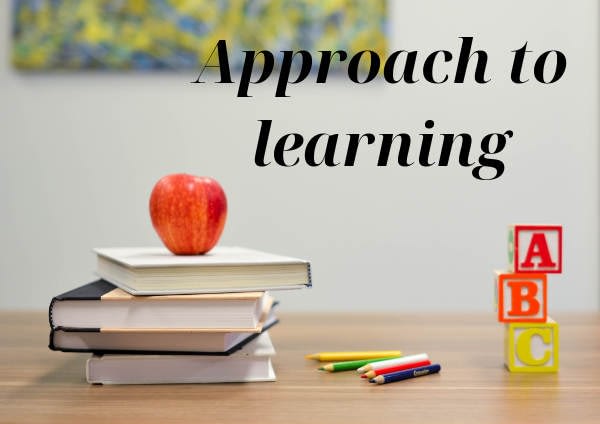
4. APPROACH TO LEARNING
Your child’s approach to learning deals with how they learn not what they are learning. With these activities and games. You are looking to build your child’s lifelong joy of learning. You are also hoping to build their resistance to failure. We all have setbacks in life. You will help to teach your child how to learn from their failures and try again.
4.1 INITIATIVE, ENGAGEMENT & PERSISTENCE
INITIATIVE means teaching your child to use their own confidence to take the lead in activities that they decide on. It means that they don’t need constant help and adult supervision. They are happy having a go on their own or with other children their age.
ENGAGEMENT is just a fancy word for how well your child interacts with others. How well they play and talk with other children and adults. You will encourage them not to be shy, to be happy playing with and helping other children.
PERSISTENCE is a very important skill for your child to learn. It is the skill of seeing tasks through to completion. Not giving up too soon. If your child finds a problem, you will encourage them to carry on and try and solve it for themselves without help.
ACTIVITIES TO ENCOURAGE INITIATIVE, ENGAGEMENT & PERSISTENCE
- INITIATIVE GAME: Ask your 3 year old to design their own game. It can be silly or funny and it probably won’t make much sense but make sure they create it. It helps your 3 year old learn that they have the power to make their own decisions. They don’t have to rely on adults for fun. They will love making you follow all the silly rules they invent.
- ENGAGEMENT GAME: This game works best with more than one child, so it is great for a playdate or at a group or preschool. Treasure hunt. To play, make sure you make the clues easy enough for them to guess. The clues should encourage the kids to discuss the answer. It will get them talking with each other and working as a team to find the treasure! It is very simple to set up. The treasure at the end should be a treat all the children can share. Just use scraps of paper with clues to lead them to it.
- PERSISTENCE: Tower building game. Use plastic cups, and show your 3 year old how to build a small pyramid from the cups. Challenge them to see if they can make it taller. At some point, the cups will fall and possibly that will make your child want to give up. Encourage them not too. Let them start again, and praise their effort. When they eventually finish a good tower, tell them how well they have done. Comment on how hard they worked and that they didn’t give up when it fell.
4.2 CREATIVITY & IMAGINATION
Creativity and imagination are easy for most 3 year olds. You just help them explore these parts of their personality. You need to create as many opportunities for them to use their creativity as you can. I have a few great ideas for you. These activities will help fire up their imaginations.
- EDIBLE FINGER PAINTING: Add one cup of cold water to 1 cup of flour in a pan. Then slowly add 3 cups of boiling water. Stir and bring to the boil. Once it has boiled take it off the heat and leave it to cool. When it has cooled, divide the mixture into separate bowls and add food coloring and/or flavoring (vanilla, almond, orange, etc). Then you can give your little one some paper and let them finger paint with the brightly colored and tasty mixture!
- MAKE A SENSORY BOTTLE: Save your empty plastic bottles. Clean them out. Then let your 3 year old choose the food coloring and glitter that they want to fill the bottle with. Fill the bottle with water and help them add their chosen ingredients. Make sure the lid is screwed on tight and then let them tip the bottle up and watch their delight at the amazing swirls of glitter and color they produce.
- CARDBOARD FORT: Take a large cardboard box and help your 3 year old make a cardboard fort/castle. Let them draw on cardboard. Make secret entrances. Drawbridges. Let their imagination run wild. Just make sure they make the decisions and you just help with the construction.
4.3 IDENTIFY & SOLVE PROBLEMS
Problem-solving is a skill that every child should be encouraged to develop. I know it is too easy to see your 3 year old struggling, then swoop in and help them. But sometimes it is better to let them work out problems for themselves. Even if they fail, praise them for their effort. It is not if they succeeded, but how hard they tried that really matters.
- PUZZLE TIME: Introduce them to age-appropriate puzzles. Jigsaws are a great one to start them off. They are cheap and easy to find. Just make sure it isn’t too hard and guide them on how to complete it at first, so they get the right idea.
- POINT OUT PROBLEMS: Point out problems that you might encounter in your daily lives and ask your child on ideas on how you think you could solve them. For example, when they have been painting at the dining room table and it is time to eat. Say “Now it is time to eat, but where are we going to eat? The dining room table is messyâ€. Hopefully, this will prompt them to have the idea of tidying. Then you can both tidy the table. Giving them the time and space to think of solutions to problems is the important thing.
- BREAK DOWN THEIR PROBLEMS: Teach your child to take a problem that they have a break it down into smaller and easier tasks. For example, if they say they are hungry. Let them decide first on what healthy meal they should eat. Then break the meal down into tasks of how to make it, how to serve it, what cutlery we need to eat it, where to eat it and what healthy drink should you choose. Breaking down a problem into manageable chunks is a great way to encourage them to tackle larger problems.
4.4 APPLY THEMSELVES TO NEW SITUATIONS
New situations can be stressful for some 3 year olds who lack confidence. You should use the following exercises to teach them that they can use the skills they already know, in new situations. Then they will realize there is nothing to be afraid of.
- CHALLENGE THEM: Put your 3 year old in new and unfamiliar situations. Take them to new toddler groups. Let them join local clubs. Arrange playdates with children from preschool at their house. For your child to be comfortable in new situations they have to experience them. Once they do and find they have the confidence. They will be able to tackle new and unfamiliar situations and surroundings. Be there to support them if they need it, but try not to jump in and help too often.
- ENCOURAGE YOUR CHILD TO TALK TO OTHERS: Encourage them to talk to other children at the playground or the park. If you see a child who is sad or alone. Ask your child what they could do to cheer the child up. If they Practice approaching other children of their age that they don’t know, it will help build their confidence.

5. MATHS
Math skills are important in everyone’s lives. Unfortunately there are many adults who are fearful of maths. The day they left school is the same day they stopped learning. That is a shame. Maths can be enjoyable, it is similar to learning a language. As with learning any language, it is best to start young. That is why good solid maths skills at this age are vital. They form the building blocks for success in later education, and life.
5.1 START TO UNDERSTAND NUMBERS & COUNTING
- LET’S MAKE COUNTING FUN!: Making numbers and counting fun is easy.
- Print out pictures of all the number up to 20 and have your 3 year old color them in.
- Play a board game like frustration or snakes and ladders that involves rolling a dice and moving a number of places.
- Give your child a plastic cup and a bowl of dried pasta. Then cut up a piece of paper into small squares are write numbers from 1-10 on the squares. Then have them choose and turn over the paper squares, see what number it is and then put the correct number into the plastic cup as fast as they can.
- Play grocery store and take vegetables from your kitchen and label them up as a certain price, for example two dollars. Then print out fake dollars or make them. Have your child go shopping in the pretend store then add up the cost and pay for all their items. Remind them to collect their change!
5.2 START TO UNDERSTAND PLUS & MINUS
- HUNGRY COUNTING: Use either treats or other small vegetables like peas or sweet corn for this game. Take a dice and roll it. Whatever number they roll, give them the number of small items. Then roll the dice again. Whatever number they roll the second time, take this away from the total. Then they get to eat the ones that were taken away. Carry on with the game. If they roll a number bigger than the number of items then let them eat them all!
5.3 MEASURING
- MEASURE THEIR HEIGHT: Measure your child’s height. Then using string, cut it at the same height. Help your child then use a ruler or tape measure to measure the piece of string to see how tall they are.
- THROWING GAME: Have your child throw a ball from a set point. Then once it has landed, help your child measure how far it went with a tape. As an alternative, let them count their paces to where the ball landed. Then measure the length of their pace and work out a rough estimate of how far they threw the ball.
- LONG JUMP: Get your child to stand on the spot, then do the biggest leap forwards that they can do. Then you can help them measure just how far they jumped. Let them try it again and see if they can beat their personal best.
5.4 SHAPES
- NAME THAT SHAPE: Cut out or print off different shapes. Then put all the shapes into a bag. Have your child take a shape, one at a time, form the bag. It is their job to name the shape. See how fast they can name all the shapes in the bag. Could they beat their time with a second go?
- DOT TO DOT: Make simple dot to dot sheets for different shapes. Number each dot so they know where to start and end. When they have finished the dot to dot and revealed the shape. Then they have to name it.
- SILLY SANDWICHES: When making sandwiches for lunch you could cut them into silly shapes. Then have your child name the shape. Square sandwiches, wraps for circle sandwiches, triangle sandwiches. Be creative!

6. SCIENCE
Science is a subject which is easy to make fun. Kids have a natural interest in science. Don’t let it get to dry and boring for them though. They will love to learn if you keep them interested with practical games. Then you can sprinkle in some of the theory so it doesn’t get too boring.
6.1 INQUIRY SKILLS
Science is simply asking questions and finding answers about the world around us. Inquiry skills are the basic way we discover our world. It could be counting how many birds visit our garden, using a magnifying glass to look at bugs or experimenting by melting ice with warm water.
- MAGNIFYING GLASS: If you buy a cheap plastic magnifying glass and give it to your child it will give them hours of fun. They will find it fascinating looking at everything around the house in fine detail. Then you can take them into the garden and see what bugs they can find. To make it more of a learning experience you could use the magnifying glass to find and identify bugs for example. Then record how many you find and of what type.
6.2 MATTER & ENERGY
- ICE AGE DINO DIG: Save your small plastic containers and buy some small plastic dinosaur models. Then freeze the dinos in the plastic containers. When they are frozen you will be left with dinosaurs trapped in ice! To get the dino out, put ice block in the sink or a waterproof container and give your 3 year old warm water to pour over it. The ice will slowly melt away and the dinos will be free. Explain how ice is water but frozen and that the warm water changes the ice back into a liquid.
- BALLOON MAGIC: Put your tap in your kitchen sink so low that the water is the tiniest continuous stream that you can manage. Then get a balloon and rub it on your hair for 30 seconds. Place the balloon next to the stream of water and watch the static electricity curve the stream of water. The water has to be a very small trickle for this to happen. To see an example watch this video.
6.3 THE EARTH
- OUTDOOR NATURE WALK: This is a great opportunity to take them into the great outdoors. If you have woodlands, mountains, desert or even just a local park. Take your 3 year old on a nature walk. Let them carry a little notepad and pencil so you can help them write down and draw all the natural things they see. Look out for:
- Trees
- Animals
- Leaves
- Rocks
- Plants
- Weather
- Rivers
6.4 LIVING THINGS
- VISIT A LOCAL FARM OR ANIMAL SANCTUARY: If you have the chance to visit a local farm or animal sanctuary with your little one. This would be a great time to learn about the animals there. They could draw the animals, learn their names, learn what noises they make. Then when they get home they could color in pictures of the animals that they saw that day. (Google images of printable farmyard coloring pages).
6.5 TECHNOLOGY
This learning objective is about using technology in their scientific learning. Examples of where you could include technology would be:
- Using the web to search for information about a topic i.e. how many eggs does a chicken lay in one day?
- Photos of animals that you saw that day.
- Measuring devices like a tape measure.
- Magnifying glass
- Binoculars to spot birds
- Phone to record animal noises.
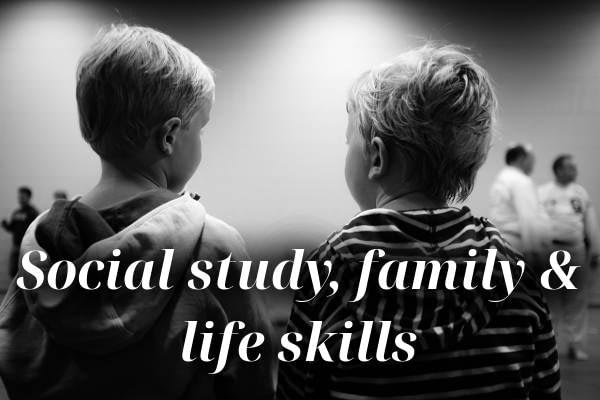
7. SOCIAL STUDY, FAMILY & LIFE SKILLS
This section is all about finding out who they are. Appreciating their family around them. It is also about becoming a positive part of their classroom and wider community as they grow up.
7.1 IDENTIFY CHARACTERISTICS OF THEIR FAMILY
- DRAW MY FAMILY: Families come in all shapes and sizes. Get your 3 year old to draw their family. You can also get them to draw their extended family and their friends as well.
- EXPLAIN RELATIONSHIPS & HISTORY OF MY FAMILY: Show them old photos, take them to the house your grew up in, if possible. Encourage them to talk to grandparents about what it was like when they grew up. Explain your families cultural heritage.
7.2 SENSE OF CLASSROOM COMMUNITY
- CLEAN UP THE CLASS: Encourage your little one to help tidy in the class. Help the teacher set out the teaching materials. Tell them how difficult and important a teacher’s job is.
- SUGGEST A CLASS PROJECT: Ask the teacher if you could help do a class project. You could help the children create a large art mural. You could help every child plant a sunflower and then bring them back into the class when they have grown. Get your little one to help you with the project and they will learn from your example.
7.3 NEIGHBORHOOD COMMUNITY
- VISIT THE LIBRARY: Normally in most towns the library is the hub of the community. If not, then find your community hub. See what is available for you and your child to get involved in. For example, our local library has storytime every Wednesday. Now we go every week and help read to all the children. I also make sure that our 3 year olds help out as much as possible. Greeting children if it is their first time and helping to put away the books. Lead by example and your child will follow.
7.4 DIFFERENT CULTRUES
- CULTURAL CUISINE: Have a food night based around a certain culture. For example, you could have a Mexican food night and let your little one try lots of Mexican dishes. Make sure they aren’t too spicy of course! Play Mexican music and teach your little one a little about the culture of Mexico. There are lots of other countries that have distinctive food cultures that you could try:
- Italy
- France
- China
- Japan
- VISIT A LOCAL CULTURAL CENTER: Where I live, we have a large Chinatown. Every year we take the kids to the Chinese new year festival and eat Chinese food with them. They love the fireworks and the large dragon. I try to teach them a little about the culture of China. Look for local cultural festivals to take your 3 year old too. It will expand their view and understanding of the different cultures around the world.
8. OTHER LANGUAGES
Your child might be exposed to people from different cultures. It is important to teach them that people around the world speak different languages. We can help them understand this in a fun and engaging way.
8.1 APPRECIATE THAT PEOPLE USE DIFFERENT LANGUAGES
- MAKE A LANGUAGE WORD COLLAGE: Together with your 3 year old. Research how people say “Hello†in other languages. Then make a poster with all the different ways people say hello around the world. You could also draw and color the countries flag and write “Hello†in that countries language below it. Show your 3 year old on a map where the country is and a few simple facts.
9. TECHNOLOGY
Technology is only going to become more important in our society. The goal for your 3 year old is not to teach them how to use Facebook or Instagram. Your child needs to know how to use technology so they can research answers to questions or use it as a tool for creation. That could mean writing, drawing, music, etc.
9.1 USE TECHNOLOGY INDEPENDENTLY
- COMPUTER PLAY: I personally would focus your child on how to use a computer rather than a phone or tablet. If you don’t own a laptop or a PC then see if you have access to one at your local library. Show them how to turn it on. Let them use the mouse. Open documents. Draw on paint. Simple tasks that start to get them familiar with technological skills that most people use in their daily lives. Some task ideas are:
- Help them find a picture and print it out.
- Help them draw a picture on the PC and let them print it out.
- Let them create a story, help type it on a word processor and help them print it out.
- Find a song they like on the web and help them play it.
SUMMARY
By following this plan for everything they need to learn in preschool. You are helping them to be prepared. You are helping out their teachers, and hopefully, your child can help out their friends if they are stuck. Your 3 year old learns so much every day from just being around you. I know I felt more comfortable after working through the learning goals. Now I understand all the learning that was expected of them from preschool. Now hopefully you do too. I felt confident I had covered every base and had given them the best chance to succeed. Just like you have. You should be proud of yourself. I am proud of you!
Don’t keep this guide to yourself, share it with any parents of preschoolers that you know. Give their children the best chance to succeed. Taking charge of your child’s education now is an important decision you have made. It will lay the foundation for their success at school and beyond.
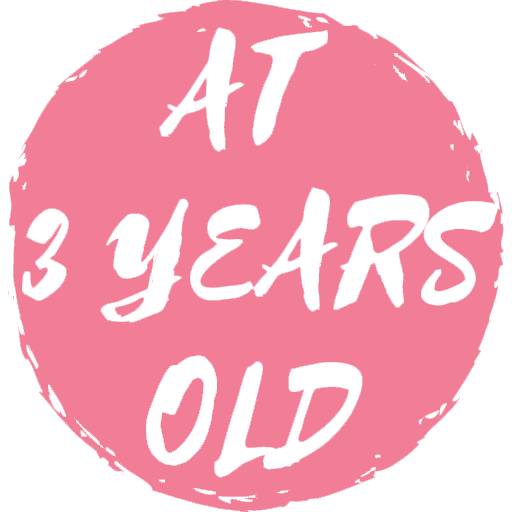
Leave a Reply